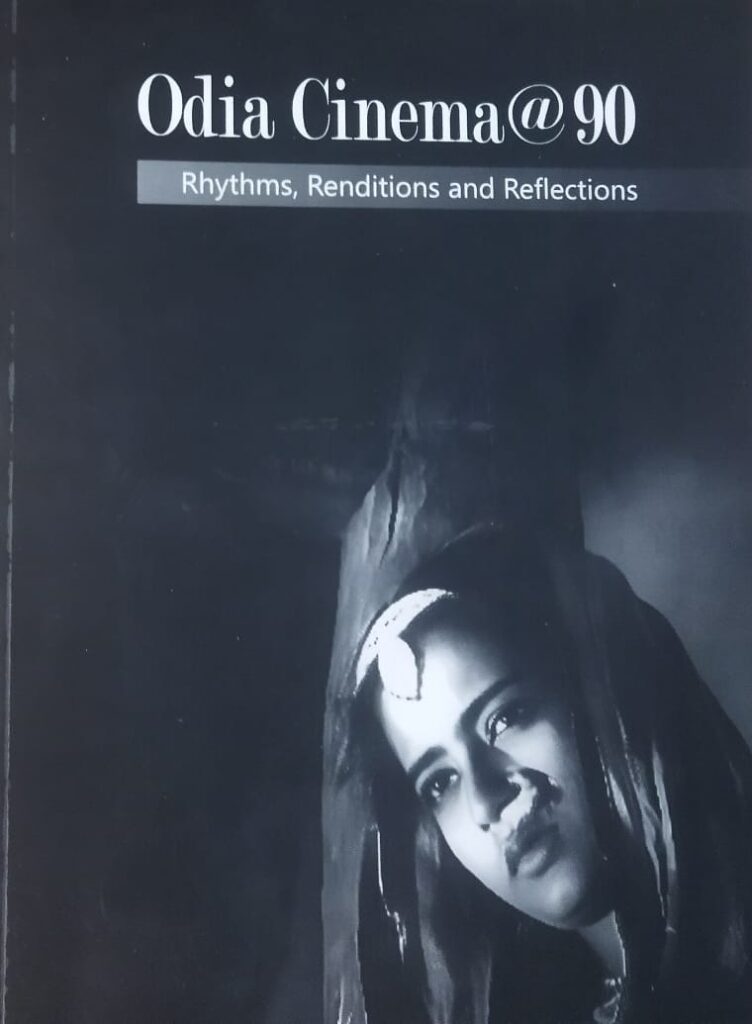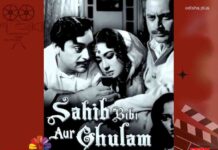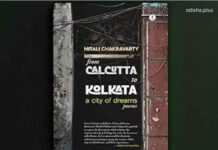Bhaskar Parichha

Odia Cinema@90 – Rhythms, Renditions and Reflections
Edited by: Sanjoy Patnaik
Published by: Bhubaneswar Film Circle
This stimulating book on Odia cinema breathes new life into the scene. With a lack of comprehensive literature on this regional film industry, any book on the subject is a much-needed addition. Odia cinema is just a decade away from reaching a century, and that is no small feat. While it has faced challenges over the years, this book sheds light on the reasons behind its tumultuous journey. It effectively fills the void in discussions surrounding Odia cinema’s troubled narrative.
Recently, two exciting events have taken place simultaneously. Firstly, the establishment of the Bhubaneswar Film Circle (BFC), which has a noble objective of promoting cinema in Odisha. Secondly, the birth of the Bhubaneswar Film Festival (BFF), an integral part of BFC, dedicated to showcasing films, enhancing skills, and sharing knowledge. BFF is a vibrant community that welcomes filmmakers, writers, critics, and cinema lovers from all corners of the nation. It’s an informal and inclusive platform that celebrates the magic of cinema in Odisha.
To coincide with the first BFF, Sanjoy Patnaik has curated this bilingual scholarly book – Odia Cinema@90 – Rhythms, Renditions and Reflections – with the goal of expanding the accessibility and exposure of Odia cinema to both local and international viewers.
Writes Sanjoy in the introduction: ‘There are three key assumptions that have into the making of this book. Unlike in states like Kerala, Bengal or Maharashtra, Odia cinema has been an inadequately discussed and researched art form. Odia cinema’s society-culture connect has been overlooked. The evolution of cinema amidst the transition from a traditional to a modern society has not been studied enough. As compared to other art forms like dance, music and theatre in Odisha, scholarly engagement with Odia cinema has been limited to mere chronological listing of events and doesn’t factor in the implications of social narratives and political processes. Besides, cinema is hardly an academic priority in Odisha even if a good number of films are intellectually stimulating. Such intellectual stimulation comes from the high content value of the narratives that stream largely from classics. However, such high dependence on literature also has its downside. Cinema in Odisha has been able to limitedly develop its independent language and grammar.’
What adds to the allure of this publication is the diverse group of veterans who have contributed. Not only do we have film personalities who are deeply involved in the industry, but also other contributors who have stepped forward to write, showing their fascination for Odia cinema. For instance, Dr. Khushi Patnaik has written a piece on a few recent films, while Dr. Mahasweta Baxipatra’s engaging write-up focuses on Odia film songs. Similarly, Debasis Mohapatra’s piece delves into the world of folk music and its connection to Odia cinema. Batakrushna Tripathy takes us down memory lane, reminiscing about the time when the Kalinga studio was the bustling hub of film production.
Kapilas Bhuyan has explored the realm of awards and recognition. Dr. Himansu Mohapatra’s analysis of the feminist perspective in Odia cinema offers a fresh and unique viewpoint on the matter, while Dr. Pragati Mohapatra’s discussion on the classical adaptation of Odia literature adds another layer of depth. Dr. Lopamudra Tripathy’s thought-provoking piece on challenging stereotypes and Jahanzeb Akhtar’s exploration of the Muslim identity in Odia cinema truly stand out among the rest.
The book is a treasure trove of insights into the Odia film industry, featuring a message from Ketan Mehta and a foreword by Dr. Shoma A Chatterji. It delves into various aspects of the industry, including film distribution and film journalism. Ananat Mohapatra’s chapter stands out, offering a nostalgic glimpse into Odia cinema that will transport readers back in time. Moreover, the book showcases the talents of Surya Deo, Sangram Jena, Dr. Biyotprojna Tripathy, and Goura Patnaik, infusing the pages with a delightful vernacular flavor.
What does the future hold for Odia cinema? Sanjoy has the answer: ‘Creatives, production and promotion together form the three most critical and inseparable components of filmmaking. In common parlance, they refer to creation of content, its execution and dissemination. Cinema’s economic viability, therefore, is contingent upon an effective and productive partnership between these three interrelated and interdependent components. Cinema in Odisha, especially in the last two decades encountered serious limitations in all the above elements leading to its close-to-complete disappearance from Odia cultural memory. One of the key reasons for the dilapidated state of the film industry appears to be the continued low priority the state government attaches to film sector growth in Odisha; a truth the film fraternity is unwilling to accept. A non-existent film policy is being revised every second year and nobody knows by whom. Massive state government investment to renovate Kalinga Studio that is still lying unused is being lauded as a colossal act of film development.’
The book written by nearly thirty authors meticulously explores the concepts and arguments to elevate Odia cinema to an international platform. Arranged thematically, the articles cover a wide range of topics. It is likely the first time that experts have delved into the versatility of Odia cinema. This well-documented book will be beneficial for researchers studying Odia cinema.
(Bhaskar Parichha is a senior journalist and columnist. Views expressed as personal.)



























